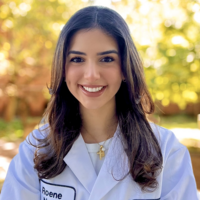Regulation of Dental Pulp Stem Cells in Fibrotic Hydrogels
BACKGROUND & SIGNIFICANCE
With an estimated 2.5 billion untreated cases of tooth decay worldwide, dental decay is the most prevalent oral disease, and it continues to increase despite advancements in prevention and treatment (Kassebaum et al., 2017). Teeth are composed of four dental tissues: enamel, dentin, cementum, and pulp. Most relevant to this study, dentin is the bone-like matrix underneath enamel that forms the main structure of teeth. Once it becomes infected by dental decay, it is removed by dental surgery. While dental pulp stem cells (DPSCs) can differentiate into odontoblasts to produce more dentin to strengthen the tooth structure following dental surgery, this process may become impaired if there is not enough tooth structure remaining post-surgery. Therefore, we propose that inflammation resulting from dental disease may significantly impair this process. As a result, the overarching goal of the study is to contribute to cutting-edge regenerative dentistry techniques to repair dental decay damage that would help to strengthen teeth and enhance general dental health. Previous in vitro studies have found that DPSCs, which are able to regenerate dentin, can perform their native roles when supported by certain restorative materials, bringing light to the possibility of novel regenerative dental therapies in clinics (Vining et al., 2018). However, while such novel biomaterials have demonstrated the potential to restore teeth and provide a supportive niche for DPSCs in healthy pulp tissue, uncertainty remains in the context of inflammation – which is what will be examined.
SPECIFIC AIM
There remains a significant need in regenerative dentistry for restorative materials that are conducive to the repair and regeneration of the dentin-pulp complex. Documented research shows that DPSCs can differentiate in response to transforming growth factor beta-1 (TGFB1) into dentin-producing cells, or odontoblasts, which regenerate and repair dentin in damaged teeth. However, further testing regarding the effects of inflammation and fibrosis on DPSCs remains necessary. This project will focus specifically on the effects of a type of inflammatory white blood cells, monocytes, on DPSCs in fibrotic hydrogels. Monocytes are recruited to tissues of injury and repair, but their impact on DPSCs in fibrotic tissue has not yet been determined. We hypothesize that the inflammatory factors produced by inflammatory monocytes will regulate the gene expression of DPSCs encapsulated in fibrotic hydrogels with defined biochemical and mechanical cues.

Comments